calsfoundation@cals.org
Oppelo (Conway County)
| Latitude and Longitude: | 35º06’04″N 092º46’04 “W |
| Elevation: | 338 feet |
| Area: | 2.43 square miles (2020 Census) |
| Population: | 737 (2020 Census) |
| Incorporation Date: | January 24, 1966 |
Historical Population as per the U.S. Census:
|
1810 |
1820 |
1830 |
1840 |
1850 |
1860 |
1870 |
1880 |
1890 |
1900 |
|
– |
– |
– |
– |
– |
– |
– |
– |
– |
– |
|
1910 |
1920 |
1930 |
1940 |
1950 |
1960 |
1970 |
1980 |
1990 |
2000 |
|
– |
– |
– |
– |
– |
– |
147 |
486 |
643 |
725 |
|
2010 |
2020 |
|
|
|
|
|
|
|
|
|
781 |
737 |
|
|
|
|
|
|
|
|
Known by thousands of travelers as the “turn-off” or last gas stop on the way to Petit Jean State Park, the small community of Oppelo had its origins many years prior to the development of the notable intersection of Highways 9 and 154. The often mispronounced name also provides recognition for this community of nearly 800.
The area south of the Arkansas River in Conway County was negotiable territory in the early days and became a part of Perry County in 1840, when it was known as Aplin Township. In 1873, the Arkansas legislature returned the area to Conway County. Again, the area’s location relative to Petit Jean Mountain was an important consideration in the reunification with Conway County.
The community began in 1850 from property owned by L. B. Opolow, who brought a sawmill and related timber operations to the area. The spelling of the community’s name has changed many times over the years. The settlement developed around a large and reliable water source and was known as Oppelo Spring. The spring afforded fresh water for animals and humans. Area women met there for socialization as they did laundry and bathed children; individual family clotheslines were kept at the site. The spring now feeds a stock pond about one mile west of Oppelo.
The first post office opened in 1867 at Flucks drug and general store and operated until 1913. During the 1880s, roadways improved, and new residents arrived, gaining support for the businesses, churches, and schools that had developed in the area.
In the post-Reconstruction era, the sale of low-cost railroad lands attracted many new settlers to the area. Two communities were developed within a few miles west of present Oppelo. The small Catholic community of St. Elizabeth began development in 1874. The larger Ada Valley developed rapidly in the 1880s and supported several stores and a school. These areas matured near the turn of the twentieth century and relied on the retail stores, physicians, and schools that were developing in Oppelo. Both communities retain an identity and are recognized as a part of the Oppelo area.
During the mid-1950s, Winthrop Rockefeller purchased a very large tract of land west of Oppelo for the development of that portion of his cattle farm located at “the foot of the mountain.” This operation, plus the barns and facilities on top of the mountain, provided steady employment for many in the community.
Prior to the Flood of 1927, the route to Petit Jean Mountain was an often muddy dirt road that followed near the south side of the Arkansas River. Unprecedented high-volume flows resulted in bank erosions and caused massive portions of the roadway to fall into the river. After several attempts to replace the old road, a new gravel road to Petit Jean Mountain was built going west from Oppelo. In 1933, the state park roads were brought into the Arkansas Department of Transportation system, and the route to Petit Jean Mountain through Oppelo was firmly established. The old route now passes through the small Riverview (Conway County) community en route to Sequoyah Park, which is operated by the U.S. Army Corps of Engineers.
In 1965, Green Bay Packaging developed a large pulp and linerboard paper mill on the Arkansas River about two miles east of Oppelo near the intersection of Arkansas Highways 154 and 113. River water provided the steam and processing fluid, and the pine forests of the area, including the Ozark and Ouachita National Forests, provided the needed timber. The plant and its components provided many new jobs and essentially created a new culture and community within the area.
In that era, pulp mill production was not seen as a desirable industrial development that was sought by communities. In this regard, many residents in Conway County blamed the paper mill for keeping other “quality” industries from locating in Morrilton (Conway County). It was neither Oppelo nor Green Bay that received criticism about the smell coming from the plant; in Conway (Faulkner County) and other nearby towns, it was commonly said, “I smell Morrilton.” However, steady technological improvements at the paper mill dramatically reduced the offensive emissions. The plant has been long recognized as a highly valuable resource for Oppelo and Conway and Perry counties.
Oppelo, with its location in the Arkansas River Valley, also has recognition in the geological literature on Arkansas. An ancient volcano has surface presentation about a mile west of Oppelo on the Payne Farm. Hershel Payne, who was once mayor of Oppelo, encouraged scientific study of the Oppelo Breccia. It was first reported in 1888, and famous geologist Dr. Cary Croneis studied the site in 1927. The Breccia is one of four significant outcrops of igneous breccias in Arkansas. The diamond mine in Pike County and the outcrop in Magnet Cove (Hot Spring County), both have significant economic significance. However, the Oppelo Breccia has only scientific significance.
Oppelo schools were merged with Morrilton in 1957, but the community continued to hold public recognition. Since its incorporation in 1966, the city has developed the basic community services of parks, fire and police protection, and sewer and water services.
For additional information:
Conway County, Arkansas: Our Home, Our Land, Our People. Little Rock: Historical Publications of Arkansas, 1992.
Felton, William Joseph, Don R. Owens, and Haydar Al-Shukri. “New Insights into the Magnetic Properties of the Oppelo Breccia in Arkansas.” Geological Society of America. https://gsa.confex.com/gsa/2002SC/webprogram/Paper32888.html (accessed August 5, 2022).
Larry Taylor
Springfield, Arkansas
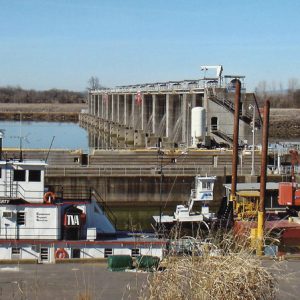 Arthur Ormond Lock and Dam
Arthur Ormond Lock and Dam 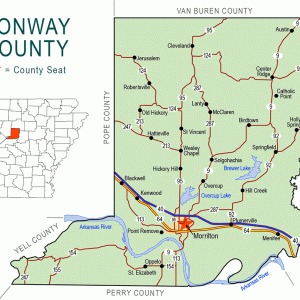 Conway County Map
Conway County Map 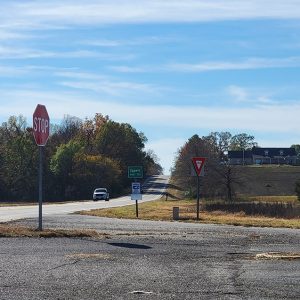 Entering Oppelo
Entering Oppelo 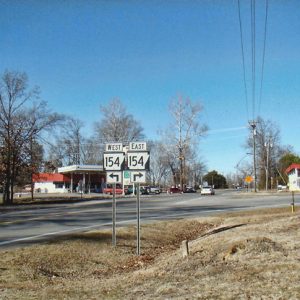 Oppelo
Oppelo 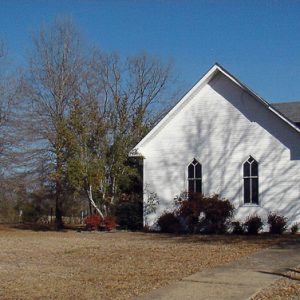 Oppelo Church
Oppelo Church 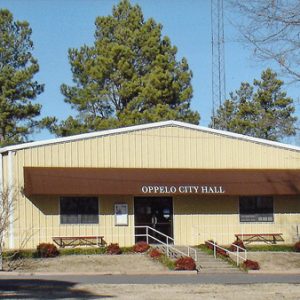 Oppelo City Hall
Oppelo City Hall 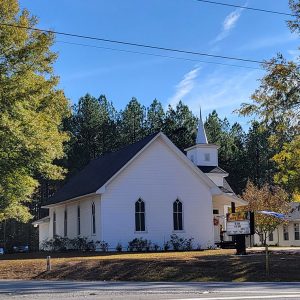 Oppelo Church
Oppelo Church 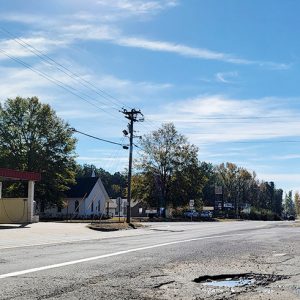 Oppelo Street Scene
Oppelo Street Scene 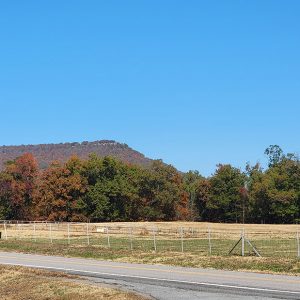 Petit Jean Mountain
Petit Jean Mountain 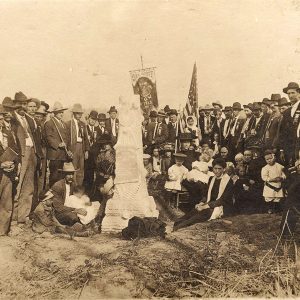 Wolf Cemetery Monument Dedication
Wolf Cemetery Monument Dedication 



Comments
No comments on this entry yet.